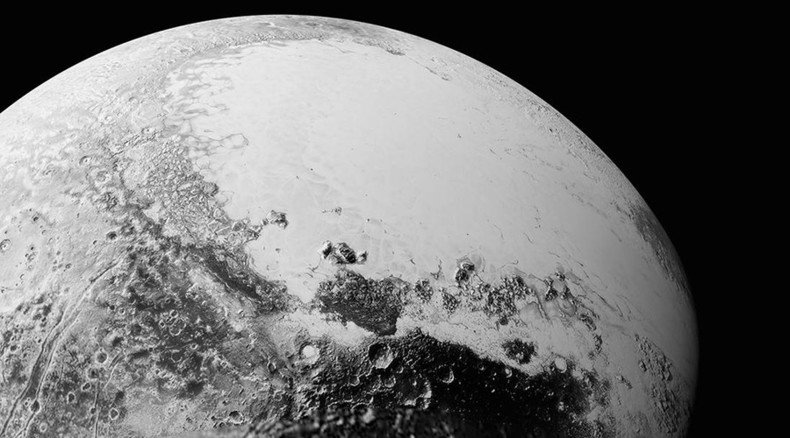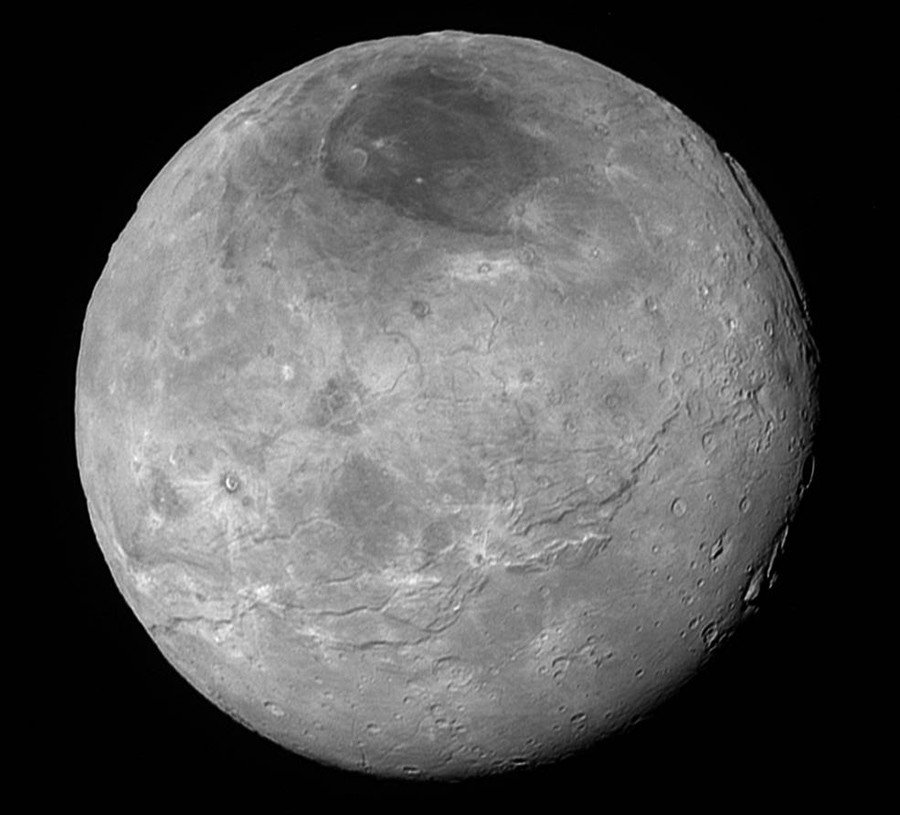New Horizons transmits 'head-scratching' new Pluto pictures

New photos of Pluto and its moons are streaming in from NASA’s deep-space probe New Horizons. Scientists are puzzled by the dwarf planet’s complex surface, including nitrogen ice flows, mountains and ridges, and maybe even wind-swept dunes.
“Seeing dunes on Pluto – if that is what they are – would be completely wild, because Pluto’s atmosphere today is so thin,” said William B. McKinnon, a researcher from Washington University in St. Louis working on the Geology, Geophysics and Imaging (GGI) team for New Horizons. “Either Pluto had a thicker atmosphere in the past, or some process we haven’t figured out is at work. It’s a head-scratcher.”
It’s complicated... Pluto's surface, that is. New close-ups from @NASANewHorizons#PlutoFlyby: http://t.co/gAjyhdHTmZpic.twitter.com/HVRn2SBXw9
— NASA (@NASA) September 11, 2015As raw high-resolution photos from the probe trickle in, they are revealing a world of complex land forms and diverse surface features entirely unexpected at that distance from the sun.
“If an artist had painted this Pluto before our flyby, I probably would have called it over the top — but that’s what is actually there,” said Alan Stern, of the Southwest Research Institute (SwRI) in Boulder, Colorado.

Formerly considered the ninth planet of the solar system, Pluto was demoted to a “dwarf planet” by the International Astronomic Union in 2006, the same year New Horizons was launched from Cape Canaveral on its mission to explore the mysterious icy world.
It took the probe nine years to reach Pluto. On July 14 of this year, New Horizons flew by the planet at a distance of only 7,750 miles (12,500 kilometers), taking many images at a resolution of a quality up to 400 meters per pixel. Photos previously released by NASA showed mountains in the equatorial region as high as 11,000 feet (3,500) tall and about 100 million years old.

On September 5, New Horizons began what NASA described as the “intensive data downlink phase,” sending all available data at its fastest possible speed. The probe is so far away, however, that transmitting high-resolution imagery takes hours, even at the speed of light. The speed of the data stream from the spacecraft has been estimated at 1 to 4 kilobits per second. At that rate, NASA estimates it will take a year to download all the imagery from New Horizons.
READ MORE: 3,500m icy peaks of Pluto: NASA reveals striking images of dwarf planet (PHOTOS)
Images that have come in so far show the surface of Pluto to be “every bit as complex as that of Mars,” according to Jeff Moore, GGI team leader based at NASA’s Ames Research Center in California. “The randomly jumbled mountains might be huge blocks of hard water ice floating within a vast, denser, softer deposit of frozen nitrogen within the region informally named Sputnik Planum,” Moore said.
The probe is now over 43 million miles (69 million kilometers) beyond Pluto, and 3 billion miles (about 5 billion kilometers) from Earth, heading towards the asteroid 2014 MU69 in the Kuiper Belt, which it is expected to reach in January 2019.











